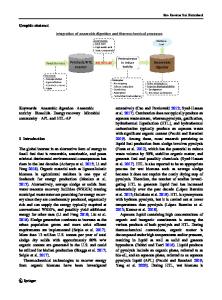Production of hydroxyapatite-glass compacts by hydrothermal hot-pressing technique
- PDF / 780,242 Bytes
- 7 Pages / 593.28 x 841.68 pts Page_size
- 16 Downloads / 342 Views
Low-temperature sintering (under 350 °C) of hydroxyapatite was attempted by a hydrothermal hot-pressing technique. The effects of borosilicate glass addition on the characteristics of the solidified body (mechanical strength, microstructure, crystal structure, pore distribution, etc.) and on the densification process during hydrothermal reaction were investigated. The borosilicate glass increased the mechanical strength of the solidified body; compression of 50% content of apatite was 2100 kg/cm2. It is also shown that water acts as a good catalyzer during solidification under hydrothermal conditions, and micropores can increase toughness of the solidified body due to the adsorption of stress. These hydrothermal hot-pressing solidification processes are so similar to sintering with liquid phase under pressure that the initial kinetics was discussed by means of the velocity measurement of shrinkage rate. In addition, these reactions may proceed in water, and are then discussed from the point of view of a heterogeneous reaction between powder and aqueous solution. It was proposed that the solidification process was due to viscous flow with rearrangement of grains in the solidified body, and the rate-determining step followed a core model of extraction from solid to solution.
I. INTRODUCTION
Hydroxyapatite, a main constituent of bone and teeth, has recently been finding applications in medical fields.1'2 Methods of obtaining apatite for these applications include the following: (1) Dry method: the solid state reaction of calcium salt and phosphate above 1000 °C in air or vapor.3 (2) Wet method: (a) precipitation of calcium and phosphate ions in an alkaline solution4'5; (b) hydrolysis of nondissolved calcium phosphate such as CaHPO4 • 2H2O and a-Ca^PO;*)*6 (3) Hydrothermal method: (a) hydrolysis of CaHPO4 using an autoclave7; (b) hydrothermal treatment from precipitation of calcium and phosphate ions in solution.8'9 Since artificial hydroxyapatite formed in nearambient solutions is not stable, easily decomposing above 1000 °C, the hydrothermal method is preferred. At the present time, solidification from the source materials as mentioned above has been performed by sintering and vitrification with glass above 1000 °C, as discussed in Refs. 10-18. The hydrothermal hotpressing technique has been reported as a new method for solidification of various nuclear wastes.19"28 The starting powder is first kneaded with a little water, followed by a hydrothermal reaction with mechanical compression of 200-350 °C and 100-500 kg/cm2. The advantage of this method is an extremely low temperature for the process, compared with sintering. High level nuclear waste generated by the reprocessing J. Mater. Res., Vol. 5, No. 3, Mar 1990
http://journals.cambridge.org
Downloaded: 19 Mar 2015
of spent fuel will in the future be converted to a borosilicate glass waste form for repository disposal. This next-generation hydrothermal hot-pressing technique is superior for many reasons: the formation of a stable crystalline phase of radioactiv
Data Loading...











